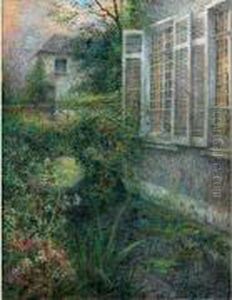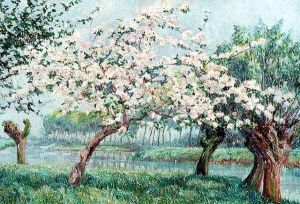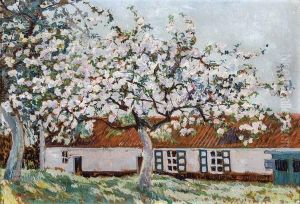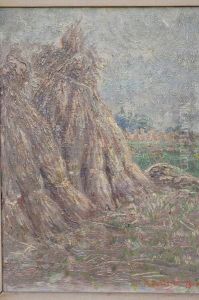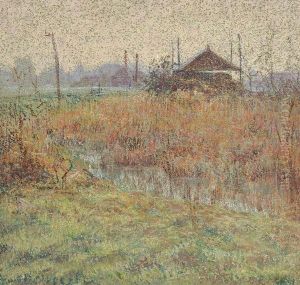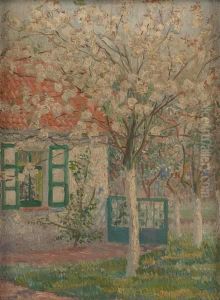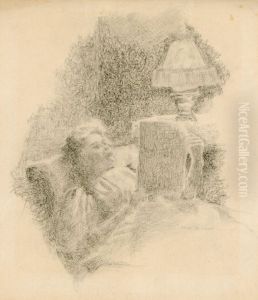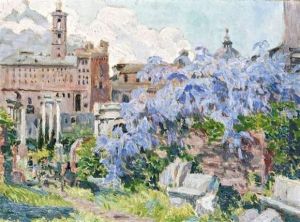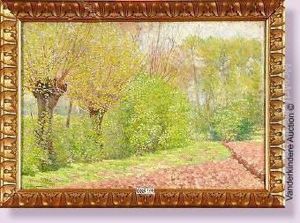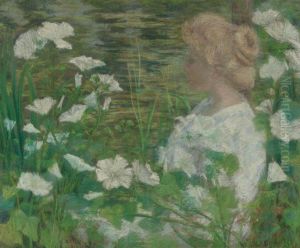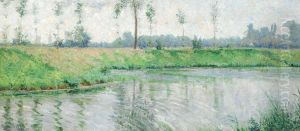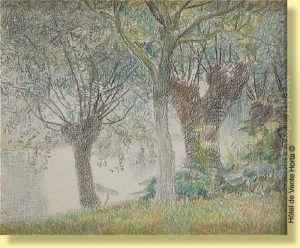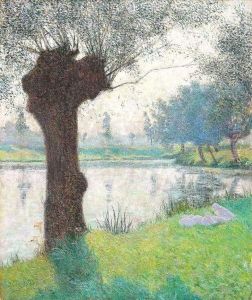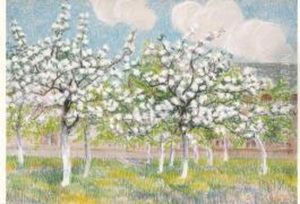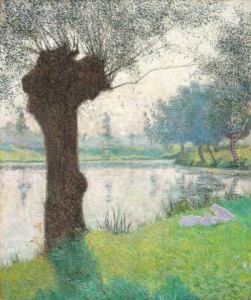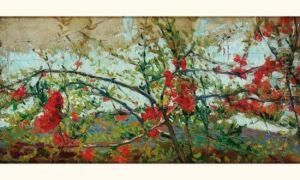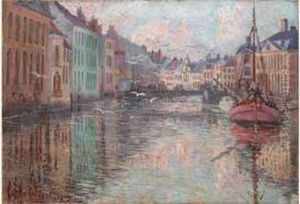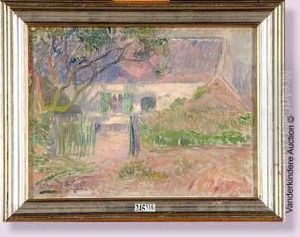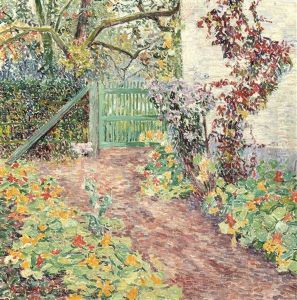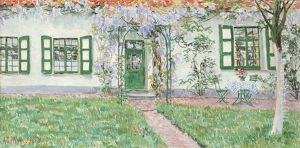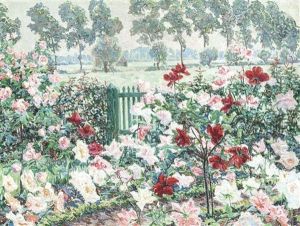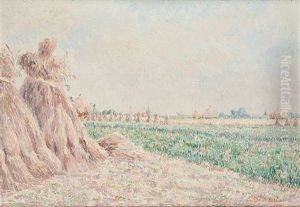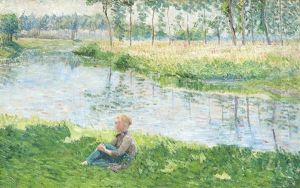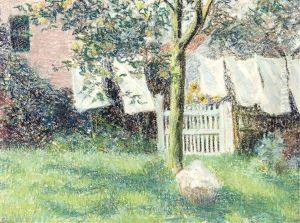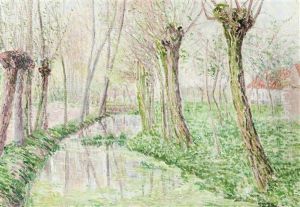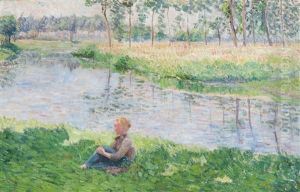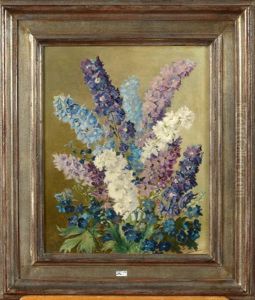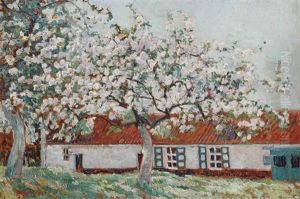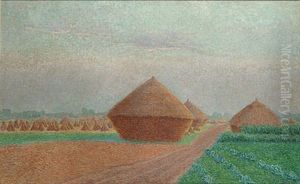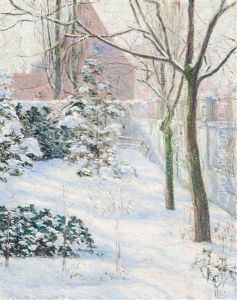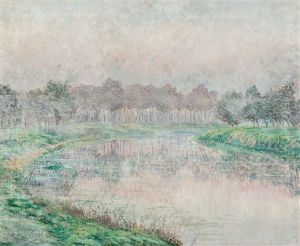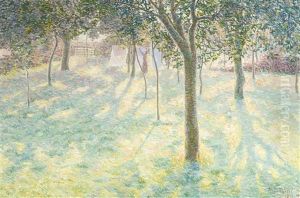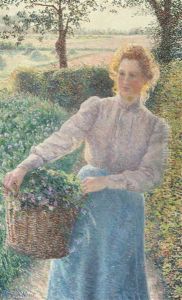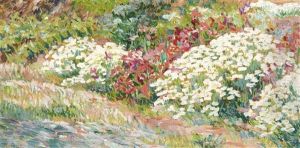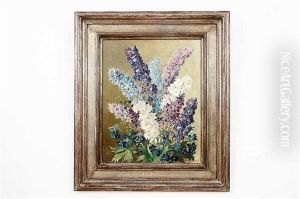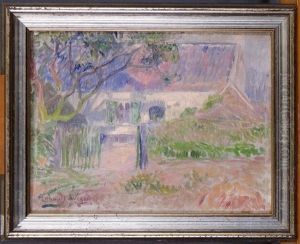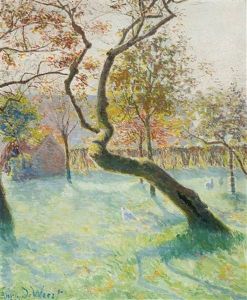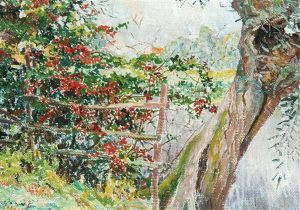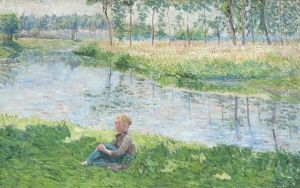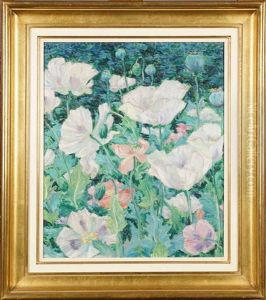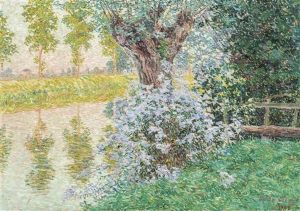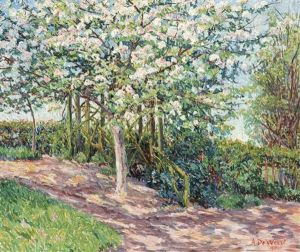Anna de Weert Paintings
Anna de Weert was a Belgian artist known for her Impressionist style of painting, mainly focusing on landscapes and scenes of rural life. Born as Anna Rosalie de Weert in Ghent, Belgium, in 1867, she was among the few female artists of her time to gain recognition. She was married to the lawyer and amateur photographer Maurice Hagemans, and they often collaborated artistically.
During her career, Anna was influenced by the French Impressionists, which is evident in her use of light and color. Her paintings often depict the natural beauty of the Belgian countryside, including the region around the river Lys, where she lived for a significant part of her life. She was particularly adept at capturing the changing effects of light on water and the atmosphere of the different seasons.
De Weert exhibited her work in various salons and exhibitions in Belgium and beyond, including the prestigious Salon des Artistes Français in Paris. Her work was well-received, and she was recognized as a talented landscape painter. Despite the challenges faced by women in the arts during the late 19th and early 20th centuries, Anna de Weert managed to carve out a successful career.
Anna de Weert's contribution to Belgian Impressionism remains significant, and her works are part of several collections, including those of museums in her native Belgium. She continued to paint throughout her life, and her oeuvre is a testament to her skill and dedication to art. Anna de Weert passed away in 1950, leaving behind a legacy that continues to be appreciated by art historians and collectors alike.
